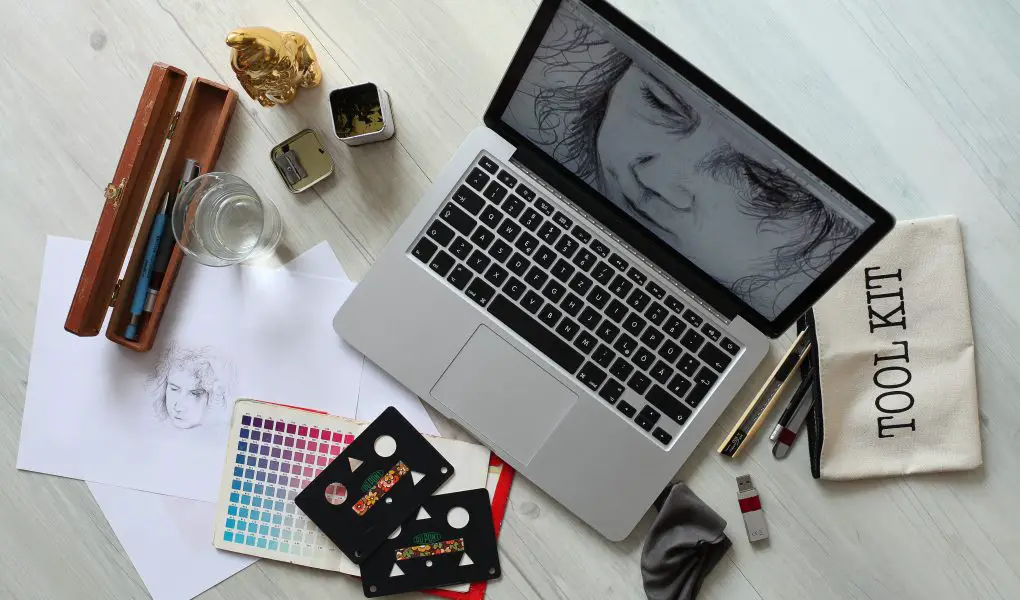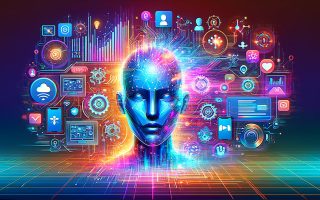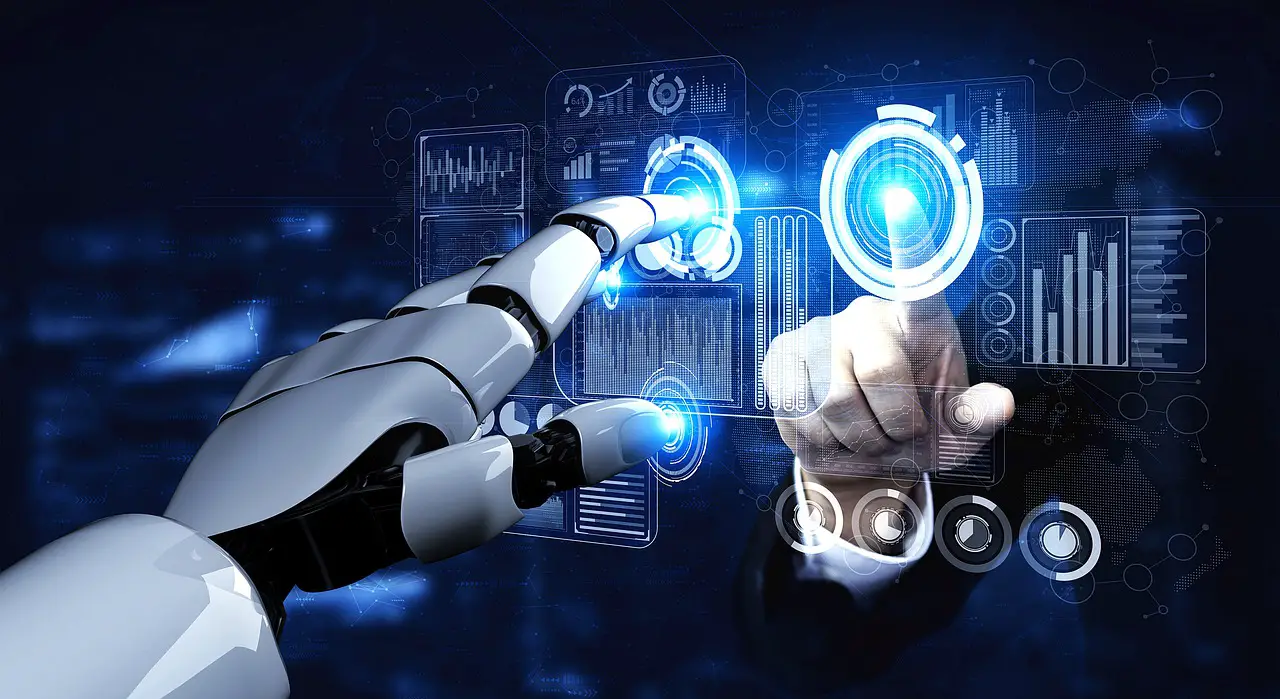In recent years, artificial intelligence (AI) has made significant strides in transforming various industries.
One field that’s having a notable impact is graphic design.
AI tools are revolutionizing the way designers create, collaborate, and enhance their work.
With advancements in machine learning and image recognition, these tools have the potential to shape the future of graphic design in remarkable ways.
In this blog post, we’ll discuss how AI tools could influence the future of graphic design.
Enhanced Design Process Efficiency.
One of the primary benefits of AI tools in graphic design is the enhancement of the design process efficiency. Traditional design workflows often involve manual tasks that can be time-consuming and repetitive.
However, AI-powered tools can automate these tasks, allowing designers to focus more on creativity and innovation.
For instance, AI algorithms can analyze large volumes of design data, identifying patterns and extracting valuable insights. This analysis can help designers make informed decisions about colour palettes, typography choices, and layout compositions.
Additionally, AI tools can generate design variations based on predefined parameters, saving designers considerable time during the exploration phase.
Intelligent Design Assistance.
Intelligent Design Assistance refers to the use of artificial intelligence (AI) tools and algorithms to provide valuable suggestions, recommendations, and insights to designers during the design process. These AI-powered design assistants leverage machine learning and data analysis techniques to understand design preferences, identify patterns, and offer intelligent guidance to enhance the creative process.
Here are a few ways in which Intelligent Design Assistance can support designers:
- Idea Generation: AI tools can analyze initial sketches or concepts provided by designers and generate alternative design ideas. These tools can suggest different color palettes, typography options, or layout variations, expanding the creative possibilities for designers and helping them explore new directions.
- Design Feedback: AI-powered design assistants can analyze feedback from clients or users and provide insights on how to improve designs. By understanding user preferences and trends, these tools can help designers iterate and refine their work effectively, ultimately enhancing the user experience.
- Visual Inspiration: AI algorithms can analyze vast amounts of design data, including existing artwork, websites, or branding materials, to provide designers with visual inspiration. By understanding design trends and aesthetics, these tools can offer recommendations and references that align with the designer’s project objectives.
- Layout Optimization: AI tools can assist in optimizing layout compositions by analyzing factors such as visual hierarchy, balance, and spacing. They can suggest improvements to achieve better readability, aesthetics, or user engagement, ensuring that the design elements are arranged harmoniously.
- Content Creation: Some AI tools can generate content automatically, such as text snippets or taglines based on provided information. These tools can assist designers in quickly generating placeholder text or providing copy ideas, saving time and streamlining the design process.
It’s important to note that Intelligent Design Assistance should be seen as a collaborative tool rather than a replacement for human creativity and expertise. Designers still play a crucial role in evaluating and implementing the AI-generated suggestions.
By leveraging the insights and recommendations provided by AI tools, designers can enhance their creative process, explore new possibilities, and deliver high-quality designs more efficiently.
Intelligent Design Assistance can significantly benefit designers by speeding up the design process, offering fresh ideas, and providing valuable insights. It helps designers to focus on higher-level tasks and harness the power of AI to create innovative and impactful designs.
Automated Image Editing and Retouching.
Image editing and retouching are essential aspects of graphic design, often requiring meticulous attention to detail. AI tools equipped with image recognition capabilities can streamline and automate these tasks, reducing the manual effort required.
With AI-powered image editing tools, designers can automatically remove imperfections, adjust colours and lighting, or even change the composition of an image. The algorithms can learn from existing design data to identify common editing patterns and apply them intelligently.
This not only saves time but also ensures consistent and high-quality results.
Customizable Design Templates.
Design templates provide a solid foundation for designers to work upon. AI tools can generate customizable design templates that align with specific design requirements, making the design process more efficient.
By analyzing various design trends, AI algorithms can identify common patterns and aesthetics. Based on this analysis, the tools can generate templates tailored to different design styles, such as minimalist, retro, or futuristic. Designers can then modify and customize these templates according to their specific needs, saving time and effort while still achieving unique designs.
Augmented Reality (AR) and Virtual Reality (VR) Integration.
As technology advances, the integration of AI tools with emerging technologies like augmented reality (AR) and virtual reality (VR) opens up new possibilities in graphic design.
AI-powered tools can analyze spatial data and help designers create AR or VR experiences that seamlessly integrate with the physical world. By understanding the context and environment, these tools can provide insights into optimal placement, scale, and interaction design. This fusion of AI and AR/VR enables designers to craft immersive and engaging experiences for users.
Ethical Considerations and Human Creativity.
While AI tools bring numerous benefits to graphic design, it is crucial to consider ethical implications and the preservation of human creativity. AI algorithms learn from existing design data, which may perpetuate biases or trends present in the dataset. Designers need to ensure that AI tools do not limit their creativity and instead use them as tools to enhance their work.
Moreover, human touch and intuition are invaluable in the creative process. AI tools should be seen as collaborators,
and assistants, empowering designers rather than replacing them. It is essential for designers to maintain their unique perspectives, ideas, and artistic vision while leveraging the capabilities of AI tools.
Conclusion.
AI tools are poised to have a significant impact on the future of graphic design. From enhancing design process efficiency to providing intelligent assistance, automating image editing tasks, generating customizable templates, and integrating with emerging technologies like AR and VR, these tools offer a wide range of possibilities.
However, it’s important to approach the integration of AI tools with caution, keeping ethical considerations in mind and ensuring that human creativity remains at the forefront.
The future of graphic design lies in the collaborative synergy between human designers and AI-powered tools, leveraging the strengths of both to create innovative and compelling designs.
As we move forward, it will be fascinating to witness how AI continues to shape the field of graphic design, unlocking new realms of creativity and pushing the boundaries of what is possible.
By embracing AI tools responsibly and thoughtfully, designers can harness their potential to revolutionize the industry and elevate the art of graphic design to new heights.




